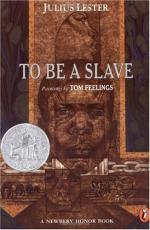|
This section contains 875 words (approx. 3 pages at 400 words per page) |

|
Points of View
These stories of the American slaves are told in three ways: their own words, their own words edited by the white abolitionists in an effort to refute the notion that they were "inferior" to the whites, and in the author's summaries of his research of the thousands of stories. Some are eloquently stated; others are crude.
This style allows the reader to get a sense of what it was like to be a slave. Without hearing it directly from the one who experienced something, readers tend not to believe it as much. When the former slaves describe their experiences, it is much easier for the reader to feel the essence of what the slave describes and experiences. That is more powerful than a retelling the slave's story.
Setting
This collection of testimonies from former slaves has several settings. The main setting is the South, where the...
|
This section contains 875 words (approx. 3 pages at 400 words per page) |

|




